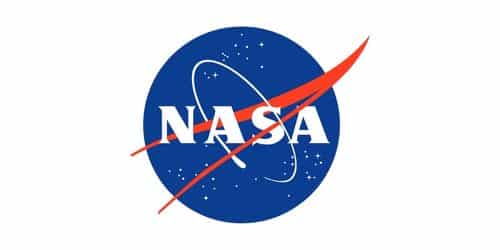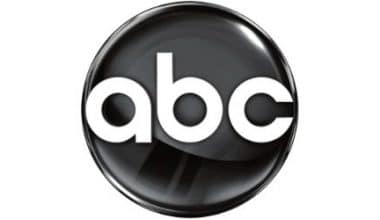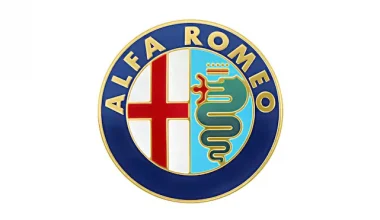The NASA logo is seen everywhere, from the top of the official NASA website to the history of the space shuttle’s wings. But NASA’s main goal is to explore space, which is reflected in the design of the agency’s logo. The NASA logo, in all its forms, is instantly recognizable and rich with meaning. The satellite’s orbit stands in for the cosmos. To represent itself, NASA typically uses one of its three primary logos. The “meatball” and “seal” logos are the most well-known, but the “worm” emblem is also used in some contexts. Additionally, NASA may create a new logo for certain initiatives. But for now, let’s discuss the old NASA logo, its meaning, color, and logo font.
Overview
The National Aeronautics and Space Administration (NASA) is the main government agency in the United States in charge of space-related activities. Dwight David Eisenhower was the one who came up with the idea for it back in July of 1958. Washington, D.C., serves as the location of the center’s administrative headquarters.
There aren’t many logos for one of the most prestigious organizations in the world. Since it started, the Aeronautics and Space Research Organization has only had three options. The Rondel principle is used to make two of them, while the third is just the name. Lewis Research Center illustrator) made the version that looks like a sphere, and Richard Danne and Bruce Blackburn, who are both writers, made the version that sounds like a sphere. There were only a few different versions of the NASA logo, and they were often used together or in different ways.
- Established on July 29th, 1958
- Starting Point: The USA
- Headquarters: Washington, D.C., U.S.
NASA Logo Meaning and History
The National Aeronautics and Space Administration (NASA) is a government agency in the United States that does research and development in the space field. The federal government owns and operates this agency, which reports directly to the president.
NASA is one of the most trusted organizations in the world. It hasn’t changed its logo very often, but the two logos it uses now are easy to recognize and have fun names: “Meatball” and “Worm.”
Still, there was one more NASA logo, and it wasn’t commonly known. The National Advisory Committee for Aeronautics (NACA) was NASA’s precursor. The “meatball,” a spherical logo of red, white, and blue, was created by NASA worker James Modarelli in 1959, the agency’s second year of operation. As such, the design alludes to several facets of NASA’s work. The emblem’s circular design suggests a planet. You can think of the stars as symbols for outer space. The red v-shaped wing represents the aerospace industry. A circle around the agency’s name represents space exploration.
NASA’s “meatball” logo was the most recognizable sign for 16 years after it was made, but in 1975, NASA made a new logo that was more “modern.” This logo, which was just the letters “NASA” in a different font, came to be known as the “worm.” These emblems were retired in 1992, and the meatball symbol has been the most popular since then.
Besides the logo, the other official NASA symbol is the logo. If the meatball represents NASA in its everyday form, then the NASA seal serves as its formal representation. However, the NASA administrator will use the seal at events of a more official nature, such as award ceremonies. The seal, like the meatball emblem, features celestial bodies, a trajectory, and a planet or star.
NASA Logo Evolution 1915-1975
As its logo, the National Aeronautic Association (NAACA) used a stylized pair of yellow wings with a black border. The black wordmark, set in a simple but attractive sans-serif font, was placed at the visual center of the logo. The logo was beautifully designed and made, and it did a great job of showing what the group stood for and what it wanted to do.
But after its first flight in 1958, NASA didn’t have an official logo until 1959. It was named “Meatball” almost immediately after its creation by Administration worker James Modarelli. The emblem was used from 1922 to 1975 and then again in 1992. It has a blue circle for the sky, a white ribbon for the stars, and a red V-shaped line or ribbon for aeronautics.
Furthermore, in the middle of the white circle of the NASA logo, written in a bold serif font, is the wordmark, with a thin white ring surrounding it. The NASA seal, which is only used on rare occasions, was based on this logo as well. It’s a blue circular badge with a white and yellow border. On top of the frame is a red border that says “National Aeronautics and Space Administration USA.” Inside the circle, on a blue background, is more yellow to counteract the outline’s yellow. The planet is surrounded by a red V ribbon and a white orbit.
Brand Evolution Continues 1975- Till Date
The “Worm” logo, which had been in use by NASA since 1975 but had been replaced by the “circle” emblem in 1992, will be reinstated as a secondary badge in 2020. This is a NASA logotype. The capital letters are made in a custom smooth sans-serif font with rounded corners and clear cuts. The inscription’s “A”s have both had their horizontal bars eliminated. In addition, the amusing name originates from the fact that the inscription’s curved surface looks like a wriggling worm in action.
Furthermore, the NASA “meatball” logo has been in use since 1992. The NASA logo has been around longer than any other badge the agency has made, and it is used on everything from t-shirts to keychains because it is so popular. In the Meatball logo, the name NASA is in white capital letters on a round, solid blue background. Next to it are red lines in the shape of a horizontal “V.” The ends of the wings on the red logo are curved in a way that looks like a stylized bird in flight. A skinny white orbit adds a little something more to the whole thing.
The NASA Worm logo, which had been in use from the 1970s until 1992, will return in 2020, but it will be used in conjunction with the now-iconic Meatball. This sleek and modern logo with bright red lettering on a white background looks great with the second badge’s classic elements and clean lines.
In addition, the Worm logo, which features fewer elements than the Meatball logo, can also be seen on a variety of merchandise. While the default color of the bold, silky lettering is red, they can take on any hue the wearer’s outfit provides.
Font type and Color for the NASA Logo
NASA has a specific logo that looks like a seal that they use for important documents, trophies, and ceremonies. But it’s almost the same as the first one, with just a few small changes and a few new designs. A blue cosmic circle is surrounded by a red line on a white background with the NASA logo color. The whole name of the agency—National Aeronautics and Space Administration, United States of America—is printed on a broad, pink-and-beige-bordered strip. At its very center sits a yellow orb, representing Earth. The moon sits in the sky next to her. In addition, the Earth is surrounded by a satellite orbit and a figural element that looks like the letter V. 178750
Also, the Space Administration showed off a new NASA logo in 1975. It was made as part of the Federal Program for the Improvement of Graphics. Because of this, the font letters in the “NASA” logo grew more “alien” looking, with the crossbar removed from the “A” and the letters becoming more streamlined, making them look like spaghetti or worms (thus the unofficial nickname).
The “Worm” logo’s inscription is made in a clear, rounded sans-serif font. There is no vertical bar in either “A.” What’s more, the right limb of the central “A” links to the initial letter of the letter “S.” The letters in the Meatball logo are thin and serifed, and all capitalized. In addition, white, blue Pantone 286, and red Pantone 185 make up the limited NASA logo color scheme.
Why Is the NASA Logo Called the “Worm”?
The NASA logo, known as “The Worm,” is so distinctive in its typography that it has earned the moniker. It was the design studio Danne & Blackburn that came up with the NASA logo back in 1974. Because of its unusual typography, the red “NASA” became known as “the worm.” The “N” and “S” represented rocket engines, while the “A” without a line in the center represented the nose cones.
Did NASA Change Its Logo?
The NASA logo has been updated twice in its history. The original NASA logo for the agency was a meatball, and it is still being used today. NASA employee James Modarelli first came up with the idea for it in 1959, the organization’s second year of operation. The organization chose to update its logo in 1975, at which time the worm was adopted as the new NASA logo. However, both versions of the logo are used by NASA at the present time.
Interesting Facts About NASA
Without the incredible efforts of institutions like NASA, we wouldn’t know nearly as much about space as we do now. There has been a lot of progress in science since the beginning of the space era. However, they have made some truly astounding, and some truly scary, discoveries since then. Here are some interesting facts about NASA.
#1. NASA Does More Than Space Exploration
NASA also makes satellites that help scientists study the Earth. This may come as a surprise to some people. NASA launches spacecraft to learn more about the universe, both inside and beyond our solar system. However, NASA’s primary focus right now is on Earth.
#2. NASA Has Educational Resources for Many Different Demographics
This is useful for teachers and students alike. However, NASA has a wealth of educational materials for students in grades K–4, 5–8, 9–12, and the scientific community at large. There is talk about science in general, the Polar Regions, plants and animals, astronomy and space travel, and other similar topics.
#3. The International Space Station Johnson Space Center Was Founded in 1961
Ever since, it has been a pioneer in the field of human space travel. Space Agency headquarters may be found about 1.7 miles southeast of Houston’s central business district. It was originally called the “Manned Spacecraft Center,” but in 1973 it was renamed to honor the country’s late president, Lyndon B. Johnson.
#4. The International Space Station Relies on the NASA Space Shuttle to Transport Vital Supplies Back and Forth
The NASA space shuttle can do a lot of different things, like take up to seven astronauts into space. This method launches satellites into space, where they can begin orbiting the planet. However, parts of the International Space Station are carried by the space shuttle. But since then, NASA has tried out 3D printing as a means of more effectively transporting supplies.
#5. NASA Is an Integral Part of the International Space Station (ISS)
Fifteen different countries are contributing to this construction endeavor. In terms of size, the ISS is the largest human-built structure ever launched into space by a single nation. In addition to NASA, the International Space Station has significant support from the Russian space agency, Roscosmos, and the European Space Agency. Besides NASA, the Canadian Space Agency and the Japan Aerospace Exploration Agency also work together.
#6. Nasa’s Climate Change Proof Goes Well Beyond the Rise in Average Global Temperatures
NASA’s studies show that the seas are getting warmer; ice sheets are melting; glaciers are retreating; sea levels are rising; arctic sea ice is getting less; and the oceans are getting more acidic. However, this scenario sounds a lot like the conditions that led to the earlier rounds of mass extinctions on Earth.
#7. A Tiny Fraction of Nasa’s Employees Are Astronauts
Even though they are the most well-known, NASA’s astronauts are not the only people contributing to the organization’s successes. NASA has a large number of scientists, engineers, writers, secretaries, lawyers, and teachers on its staff, in addition to a large number of scientists and engineers.
#8. A Space Shuttle Astronaut Can Only Eat 3.8 Pounds of Food per Day
And if you don’t think that’s bad, consider that just the packing adds up to 1 pound. NASA keeps the food that astronauts eat in individual packs that are easy to carry and eat in space.
Also, it’s important that the meal be ready to eat or that it only requires minimal preparation (such as adding water or heating) before being consumed. Fresh fruit and vegetables, however, are exempt and should be stored in the fresh food locker.
#9. Nasa’s X-15 Aircraft Set Unofficial World Records for Speed and Altitude
Unofficially, NASA’s aircraft holds the records for fastest speed (4,520 mph) and highest height (354,200 feet). It completed 199 trips between 1959 and 1968. The information learned from the program was used to make the Space Shuttle better and to build the Mercury, Gemini, and Apollo spacecraft.
#10. On April 10, 2019, NASA Captured the First-Ever Image of a Black Hole
The globe was able to see an image of a black hole and the shadow it cast for the very first time in history. This feat, which was recorded by the Event Horizon Telescope (EHT), was made possible by an algorithm that MIT graduate Katie Bouman made.
#11. Nasa’s Network Does Not Operate at a Rate of 91 Gigabits per Second
NASA’s experiment on internet speed in May 2014 marked the beginning of the rumor. In a NASA experiment, researchers sought to see how quickly data could be sent between two computers located in close proximity to one another.
As a result, NASA’s Goddard facility in Maryland connected to the SC13 in Denver, reaching speeds of 91 Gbps. And for this experiment, NASA tapped on the ESnet’s potential of 100 Gbps file transfers.
#12. An Antenna the Size of a Football Field Would Be Ideal for NASA to Connect With Faraway Spacecraft
In order to accomplish these tasks, the NASA Deep Space Network makes use of antenna dishes with diameters that can reach up to 70 meters (or 230 feet).
What Was the Original NASA Logo?
The original NASA logo is one of the most well-known and important logos in the history of the world. A red chevron wing penetrates a blue sphere representing a planet with white stars and a spacecraft orbiting it.
Today, this dish is universally referred to as “the meatball.” With the technology of the 1970s, however, it was hard to copy and print this NASA logo, and many people thought its complex metaphor didn’t fit with the idea that the 1970s was a modern aerospace era.
Why Did NASA Change Its Logo?
Even though the logotype was attractive and modern and had a strict design, it was taken out of official use in 1992. The new administrator of NASA at the time, Dan Goldin, stated that the personnel of the agency did not like the worm and that complaints had been made about the “incompetence and lack of projection” of the logo.
Old NASA Logo
The old NASA logo is said to be the “Worm’’. In 1974, Richard Danne and Bruce Blackburn worked for NASA as part of the NEA’s Federal Graphics Improvement Program. In 1975, the agency chose the modernist NASA logotype, which was called “the worm” because of the way the letters N-A-S-A were written in red. The old NASA “worm” logo, the “A” doesn’t have any horizontal bars. Instead, the space inside the letters looks like the point of a rocket.
In 1992, NASA’s then-administrator, Daniel Goldin, decided to stop using the old NASA logo in official capacities. Until 2020, when Administrator Jim Bridenstine brought it out of retirement and put it on the rocket for SpaceX’s Crew-Demo 2 Mission, the design was only used on special occasions when the Visual Identity Coordinator at NASA Headquarters gave permission for commercial merchandise.
The NASA Federal Credit Union will employ the original “worm” logo in 2020, but in blue instead of red. As part of MLB’s City Connect initiative for the 2022 season, the Houston Astros unveiled a new space-themed uniform. The front of the jersey states “Space City” in the NASA “worm” logo style. The numbers and player nameplates also use the same font.
Can I Use the NASA Logo?
No one may use the NASA Insignia (the blue “meatball” logo), NASA Logo (the “worm” logo), or NASA Seal for any reason without prior approval. However, no one outside of NASA is allowed to use these pictures for anything, including NASA-approved products, publications, or websites. By using these photos, you can’t imply that you like or support a third-party business, activity, or person.
Also, no NASA insignia, logo design, or seal can be used as a branding tool or in any way related to advertising, trade dress, promotions, or similar marketing on any website or communication tool run by a third party.
Can You Put a NASA Logo on a Shirt?
Use of the NASA Seal is restricted to the NASA Administrator or the Administrator’s office; it may not be used on any commercial products. Names, logos, devices, or images from NASA projects can be used on items, as long as NASA reviews and approves them and stays within the co-branding limits listed above.
Is Nasa’s Logo in the Public Domain?
The insignia, the “worm” logo, and the NASA seal are all examples of images that have been released into the public domain, just like most other images made by the United States government. But section 14 CFR 1221 of the Code of Federal Regulations says that they can only be used in certain situations. Also, read GEORGIA TECH LOGO: Meaning, Font, History, and Admission.
Guidelines for Reproduction of NASA Images
Can anyone use NASA images?
- Images, films, and audio from NASA can be freely utilized in classrooms and libraries for research and reporting without worrying about infringement.
- There is a strict policy against using NASA’s insignia logo (the blue “meatball insignia”), the retired NASA logotype (the red “worm logo”), or the NASA mark in any way without prior approval.
- To avoid violating someone’s right to privacy or publicity, you should get their permission before utilizing any NASA photograph that features a recognizable person for commercial purposes.
- Commercial uses of NASA content, including advertising, are prohibited if the impression is given that NASA supports or recommends the advertised product or service.
- It is important to give NASA credit as the original author of the content.
NASA Aims and Goals
NASA is the United States government agency in charge of space exploration, space technology, Earth and space science, and aeronautics research.
Furthermore, NASA is also a source of inspiration because it takes risks when it explores uncharted territory, learns new things, and creates new technologies. But since it was founded in 1958, each of NASA’s groundbreaking scientific and technological achievements has helped to shape the agency’s history. NASA has done some amazing things, like getting people to land safely on the Moon, exploring every planet in the solar system, and touching the Sun. Also, NASA’s current leadership in aeronautics, space exploration, and science is important for the United States’ economic growth, national security, and cultural identity. The four main strategic goals that NASA has been established to achieve are as follows:
- Resolve national issues and jumpstart the economy
- Capability and process optimization
- Make new scientific discoveries that further the advancement of human understanding
- Improve long-term exploration and exploitation by increasing human presence in space and on the Moon.
The Office of the Administrator in Washington, DC, is responsible for setting NASA’s broad strategic direction. Also, the Agency has four Mission Directorates and one Mission Support Directorate, which are in charge of science, research, and developing new technologies. Daily operations at NASA take place in many labs, hangars, wind tunnels, control rooms, and other buildings across the country. However, this is done in seven different test and research sites across the country, as well as at the Jet Propulsion Laboratory (a federally funded research and development center) and nine other centers.
The Companies Mission
Start an exploration program that is good for the environment and can make money. Work with international and commercial partners to make the solar system a place where people can live and bring back new information and opportunities. Promoting national economic growth in the aerospace and aviation sectors, learning more about our place in the universe, enhancing American aerospace technologies in collaboration with industry, and strengthening America’s position as a world leader are all goals we share.
What Is the Official NASA Logo?
The official NASA logo features a black disc with a white orbit, a spaceship, a big name, and a red ribbon. The locals began calling him “meatball” as a result. This version was created by James Modarelli.
Why Is the NASA Logo Called the Worm?
A NASA emblem known for its distinctive bespoke typography is known as “The Worm.” The logo was developed in 1974 by Danne & Blackburn, a design company. The word “NASA” painted in red quickly acquired the moniker “the worm” due to its distinctive writing. Rocket tubes were represented by the letters “N” and “S,” while rocket nose fairings were represented by the “A” without a line in the middle.
Did NASA Change Its Logo?
In its history, NASA has only twice modified its logo. The “meatball” was the agency’s first logo, and it is still in use today. In 1959, the second year of NASA’s existence, it was created by employee James Modarelli of the organization. The agency made the decision to change its logo in 1975, and the “worm” was adopted as the new standard. Both logos are still in use by NASA today.
Can You Use the NASA Logo?
The usage of the NASA logo by other companies is of no interest to NASA. Additionally, this is crucial. NASA’s aesthetics are considered to be in the “public domain,” therefore using them for commercial purposes is free. This explains why so many different brands create their collections in this manner. However, organizations must obtain authorization before using the logo.
Why Did NASA Retire the Worm Logo?
Dan Goldin, NASA’s then-new administrator, claimed that the worm was despised by the organization’s staff and that complaints had been made regarding the logo’s “incompetence and lack of projection.” Some contend that Goldin’s motivation for the shift went beyond simple design aesthetics.
What Is the Red Line in NASA Logo?
The sphere of the NASA symbol stands in for the planet, the stars for space, the red chevron for aviation (the most recent design for hypersonic wings at the time the logo was created), and the orbiting spaceship around the wing.
Conclusion
Therefore, NASA has all the fun, what with lawsuits and planetary discoveries. There is a general consensus that this institution is one of the best-funded in the country. And when it comes to funding a facility whose employees are drafting plans for nuclear weapons that may destroy an asteroid or overseeing research into the possibility of alien interaction, I think that number should be higher. As time goes on, NASA’s legacy will only grow richer.
Similar Posts
- DATA ANALYST: Overview, Salary, Job, Resume & All You Need
- How to Send a Letter: Guidelines, Costs and Other Mailing Options
- COMMERCIAL REAL ESTATE INVESTING: What It Entails and How to Start Up Investing
- 21 Best CALL CENTER PHONE SYSTEMS & Reviews in 2023 (Updated).






